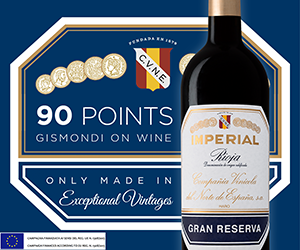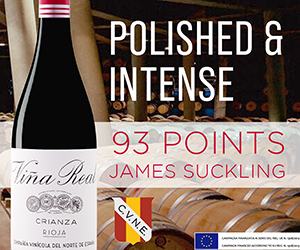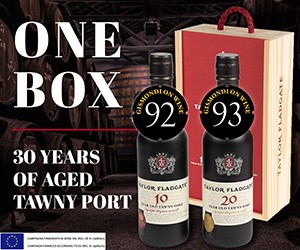Down on his luck and near broke, Australian prospector Samuel Smith struck gold at Bendigo, Victoria, with his 17th and final mineshaft yielding £300 worth of gold.
The year was 1851.
The horticulturalist immediately turned wine grower, and opened an enterprise in the Barossa Valley called Yalumba, an aboriginal word meaning "all the land around." Five generations later, Robert Hill Smith, co-owner of Australia's oldest family-run wine business, has been prospecting in Vancouver, looking to make a similar strike with a new series of products.
Hill Smith caught the wine bug in 1971, but was unable to get into an overcrowded wine school. Instead, he turned to business school, and after stops in London, Burgundy, Bordeaux, Jerez and Tuscany, he returned to Barossa to run Yalumba's fledgling export business.
By the late 1980s, Hill Smith was ready to make the most of his global network of industry friends by setting up a parallel and highly successful import business to bringing many of the world's best known to Australia. On the day we meet in Vancouver, however, Hill Smith is wearing his export hat, and the mission is to launch his company's latest brand: the Yalumba "Y" series.
From my perspective, this is a case study in contemporary style: consumer-friendly packaging, well made wine and appropriate pricing. For anyone wanting to know why Australia is cleaning up in B.C. liquor stores, the Y series would be a good place to start.
Finding them in the store will be easy. Simply look for black Y stamped on the top of the cap, visible whether the bottle is standing or lying on the shelf. More innovative is a small perforated tab bearing the wine's name and vintage, which is easily removed from the back label.
If you are the type who can't remember the name of that great little bottle you had for dinner last night, this one makes it easy: pull the tab and store it in your wallet for the next trip to the wine shop . Factor in an uncluttered label that sports clean, colourful art for each varietal and you have a very hip retail package. But in the end it's the quality of the wine that counts. Here's what I found:
I was happy to see a riesling in the series because of Yalumba's history of growing the varietal at Pewsey Vale (Heggies). The 2001 Riesling has a light citrus/mineral/grapefruit nose and flavour, with a touch of lime rind. It's light in the mouth, like a Mosel, but without the intensity. The finish is dry. Serve as a patio sipper or alongside medium-spicy Asian food. (In another progressive move, the 2002 should come with a screw cap.)
The wild olive tree on the riesling label reflects the family's long-held belief that with good wine there should also be good food and it backs those words up with regular cooking classes at the winery.
The 2001 Unwooded Chardonnay is a wine for its time. The no-oak style is most welcome, as are its pure chardonnay flavours. Crisp and clean, it offers ripe apple flavouring with streaks of citrus and mineral throughout. Yalumba recently became the first Australian winery to embrace the Greenhouse Challenge, an initiative dedicated to reducing greenhouse gas emissions. The Cape Barren Goose illustrated on the label is often found in a small flock amid the wildlife sanctuary at Yalumba.
The series star is the 2001 Viognier. Yalumba's pioneering work in Australia with this rare Rhone variety is symbolized by the vine cuttings that appear on the label. Working on the theory that viognier thrives in the same areas as shiraz does in France, Hill Smith did the same in Australia.
This fabulous wine has a fresh, clean, open nose, citrus/floral/honey aromas, and flavours streaked with spice. A fine example of viognier without an overpowering alcoholic content.
The Hill Smith family marks its long association with cricket and horse racing with a spirited racehorse in free flight on the 2000 Merlot label. It's a pleasant surprise given how mediocre Oz merlot can be. Look for cool minty-cedar aromas, good acid and bright plummy red fruit flavours. The finish is slightly green and stemmy.
Yalumba is one of the very few wineries in the world with an on-site cooperage, and it's symbolized on the 2000 Shiraz label. Surprisingly, this vintage is not quite up to the standard. Look for a light peppery red with a warm licorice-spice flavoured finish. Simple, pleasant and easy drinking.
Although government buyers have seen fit to list only two labels for the moment, the rest are available through Mark Anthony Wine Marts (see adjacent box) and will soon be available in other private wine shops.
Weekend Wine Tasting Yalumba Y Series, South Australia:
Wine: Riesling 2001
Price: $16.95*
Stock No.: 625129
Score: 14/20
Remarks: Light summer sipper.
Wine: Unwooded Chardonnay 2001
Price: $16.95*
Stock No.: 625103
Score: 14.5/20
Remarks: Fresh-cut apples and citrus.
Wine: Viognier 2001
Price: $17.95
Stock No.: 624502
Score: 17.5/20
Remarks: Outstanding style and elegance.
Wine: Merlot 2000
Price: $17.95*
Stock No.: 625111
Score: 13.5/20
Remarks: Cool, minty.
Wine: Shiraz 2000
Price: $17.95
Stock No.: 624494
Score: 14/20
Remarks: Simple, light, soft, peppery.
* Available only at Mark Anthony Wine Marts: 962 West King Edward Avenue, Vancouver (604-739-9463), 15220 North Bluff Road, White Rock (604-538-WINE), 2560A Sinclair Road, Saanich (250-721-5222).

 quicksearch
quicksearch





